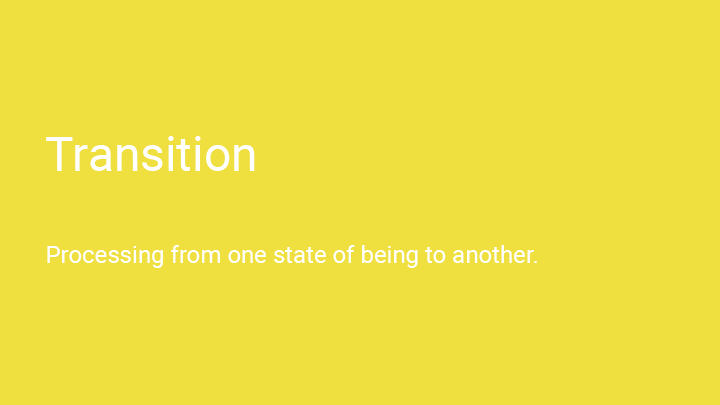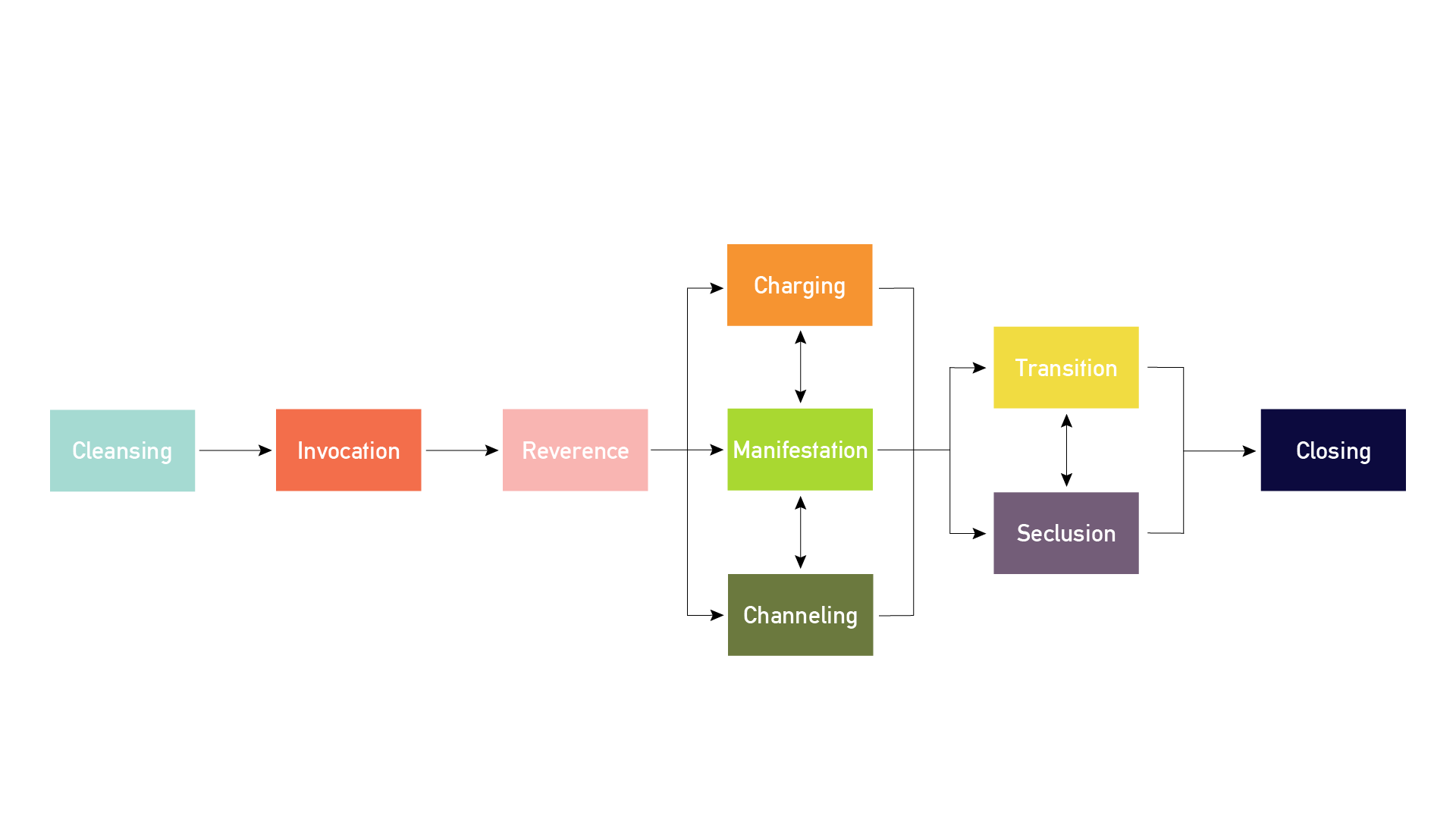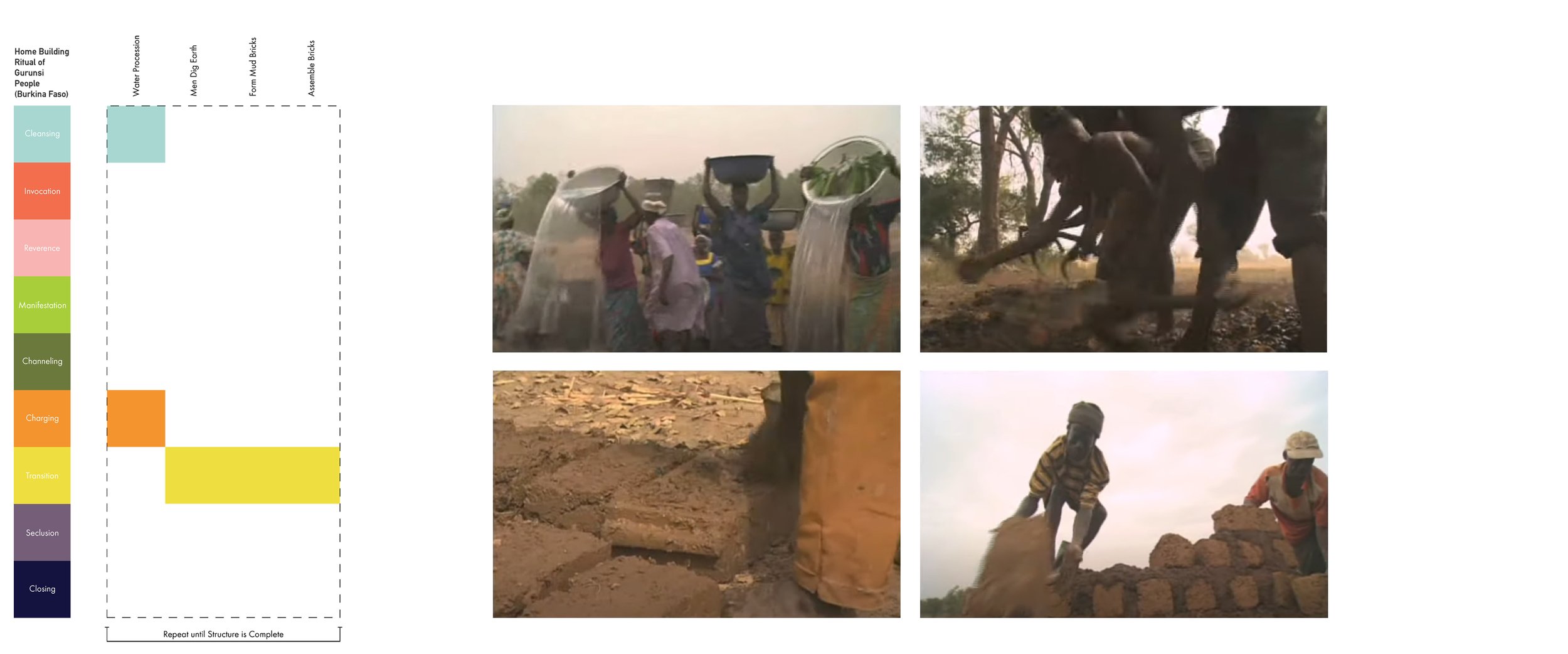
Building Ritual // Ritual Building
Stuckeman Family Building
201-, 243 E Park Ave, State College, PA 16803
Caulen Heil & Saige Runyan
The Pennsylvania State University Department of Architecture
ARCH 491 Design Research Studio Experiments in Building
Professor Marcus Shaffer
Fall 2021
Abstract
Context
Throughout the Anthropocene, ritual & architecture have been linked. In our contemporary age, however, this link has largely been lost. This is unfortunate, especially in an era where we are increasingly disconnected from each other & from the planet. This is particularly relevant in architecture, as it is both highly significant in terms of material waste & greenhouse gas emissions as well as its role as a mediator of human behavior. There are many ways that ritual can be seamlessly incorporated into the process of building. Ritual & architecture are both processes with progressive stages in which elements come together. Ritual involves a sequence of events to achieve an outcome. Architecture involves a sequence of building elements coming together in a specific order. Some cultures in the past & today synthesize building & ritual. One example is the Gurunsi tribe of West Africa, who construct adobe houses using ritual. After examining a variety of ritual practices, involving building or otherwise, an archetype can be found & utilized to incorporate ritual back into our modern lives.
Situation
In our contemporary society, the processes of building & ritual are almost entirely separated. Architecture culture today is highly reflective of our individualistic capitalist lives. To incorporate ritual into this culture could be radical. We sought to imagine the answers to the following questions: “How would a ritual building look in the context of a contemporary architecture school?” &, “What does a ritual facilitated through building look like?” Using Sacrality as a material, we begin to intuitively generate an achievable ritual process. This way, we could begin to examine these questions from firsthand experience. What form does the ritual space take? What role do permanence & impermanence take? Are the ritual performers designated roles? How does this involve the community & culture of an architecture school?
Contribution
We analyzed various rituals from various cultures & extracted elements common to most ritual formats. We used these elements to envision an archetypal ritual, informed by the various cultural rituals we studied as well as our own logic & intuition. These elements come together symphonically, moving across time like notes in music. Sometimes the elements would occur simultaneously, like a harmonious musical chord. We specifically analyzed Gurunsi tribal building using this system, & allowed this precedent to inform our own ritual. We then drafted, performed, & recorded two instances of our own ritual building. We designed a simple structure that could be built & rebuilt as many times as necessary. We used found materials from past student works. In our first iteration, we focused on presenting the archetypal ritual itself, in a simplified way. Though this was largely successful, we found that it lacked intentionality. Thus, in our second iteration, we created a manifested purpose for the ritual. This purpose was essentially to manifest a future for the Stuckeman School that is in harmony with Gaia, the personification of the Earth. We can create images & models that reflect the future we manifested in the ritual, the final form of the Stuckeman community in harmony with the Earth. We find that ritual building is a method that synthesizes our modern world & the lost spiritualism of past humanity.
Background
What is Ritual?
Ritual is the practice of manipulating the physical world to produce a desired conscious effect. In other words, ritual is a bridge between the outer world of the body & the inner world of the mind.
How this works is that you:
-Light a candle
-Arrange a set of objects
-Inhabit a particular space
-Assume a particular pose ; use the body to manipulate the environment
Symbolic Significance
The specific manipulations included in the ritual will each have a metaphoric significance. You may not be consciously aware of the significance, but it speaks to your unconscious mind through symbols. Carl Jung was a proponent of the idea that the unconscious mind speaks through the language of symbols. Rites & rituals speak this language, & thus carry the keys to the unconscious.
Sensory Experience
The ritual creates a sensory experience, through which the meaning of the ritual can enter your mind & alter your consciousness. Rituals can make use of any sense, & some the most impactful rituals integrate all of your senses:
-Sight (stained-glass windows)
-Smell (incense)
-Hearing (shamanic drums)
-Taste (tea)
-Touch (holding hands)
-Proprioception, or the sense of your body in space (dancing)
The desired symbolic meaning is infused into the ritual physically, & travels into your unconscious mind via your senses where it can produce the desired conscious experience. In a religious or mystical mind via your senses where it can produce the desired conscious experience. In a religious or mystical framework, this conscious experience may be believed to subsequently alter events in the physical world, but that is out of the scope of this research. Essentially the collective unconscious illustrates that there are certain archetypal symbols which recur across many cultures & many eras. There is something about these primal symbols that seems embedded in the human mind, regardless of who you are or where you came from.
Research & Analysis
Ritual Elements
In our initial phase we analyzed a selection of different rituals from different cultures, identified the archetypal processes at work, & extracted a system through which to understand ritual itself. In this exercise, we were able to identify a set of common elements. Every ritual that we studied contains some set of them. Moreover, the sequential relationship of the elements seemed to loosely follow a common pattern.









Ritual Diagrams
This diagrammatic system allows us to place the elements within the contexts of the rituals we studied, & then compare & contrast them. Using this comparison, we have extracted an archetypal diagram which is intended to illustrate the primal ritual that is embedded into humanity's collective unconscious.








Ritual Building Case Study: Gurunsi Home Building
We found the absence of time in our system problematic. We devised a symphonic system in which elements occur. This means multiple elements can occur at the same time, like a chord in music. We used this system to analyze the ritual building of homes of the Gurunsi people. The ritual has spiritual high points followed by periods of physical labor. Everyone sings while performing their labor, thereby charging it.















